The delightful but overlooked alpine town of Trento should be on your radar all year round for a perfect weekend getaway. Words and photos by Valentina Nicastro (unless otherwise stated)
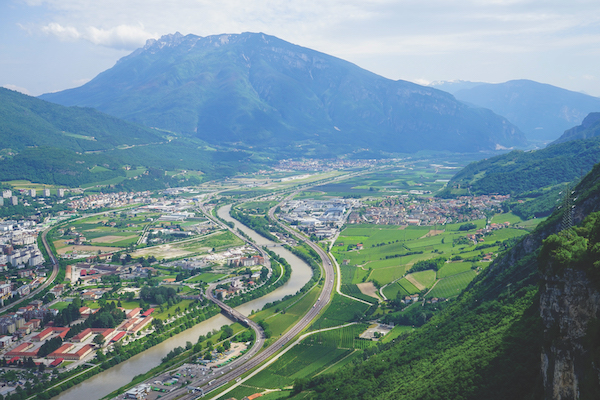
It may not be the first place that comes to mind when you’re planning a weekend gateway to Italy, but Trento has all the ingredients for the perfect Italian break. Just an hour-and-a-half drive from much-loved ski destinations like Madonna di Campiglio, this compact alpine town in the northeastern region of Trentino is big on history, nature and gastronomy, and makes for a relaxing weekend escape all year around. Each season has its own draws and charms in Trento, from rosy-cheeked walks through the picturesque Christmas markets to scenic spring views of the blossoming Adige valley surrounding the town. What’s more, when you stay two nights or more in officially recognised accommodation, you get a special Trentino Card that grants free access to regional public transport and all the major sights and attractions for the duration of your stay, meaning that the only money you’ll spend here will likely be for food, drinks and souvenirs.
Trento is a cosy little town still quite untouched by mass tourism and with a unique cultural identity, essentially Italian but heavy influenced by neighbouring Austria. Its past as a member of the Austro-Hungarian Empire has left traces on local architecture and gastronomy, so much so that at times you’ll find yourself wondering if you are really in Italy. Trento has also played its part in the wider history of Europe, being the town that hosted the famous Ecumenical Council called by the Catholic Church in response to the Protestant Reformation in the 16th century.
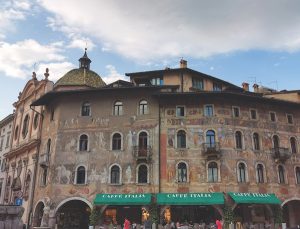
Piazza Duomo is Trento’s main square and the natural starting point for a tour of the city. Dominated by the magnificent Fountain of Neptune, this lively piazza is ringed with colourful buildings and frescoed palaces, as well as a number of obligatory stops for any first time visitor to the city. One of these is the Cathedral of San Vigilio, a church dating back to the 4th century that rose on the grounds of an ancient temple and holds the remains of the local patron saint.
Also within are stunning frescoes and precious works of art, as well as two flights of stairs carved into the walls that lead up to the bell towers, but the most fascinating part of the visit is going underground to see the remains of the earlier church. Right next door, an interesting selection of wooden sculptures, rich tapestries and illustrated manuscripts from the diocese’s artistic heritage is on display at the Diocesan Museum, set inside Palazzo Pretorio, the palace that served as the bishop’s residence until the 13th century. Standing next to it, the Civic Tower, the former site of the city’s prison, rises high above the piazza.
Trento’s charms continue on Via Belenzani, an elegant street departing from Piazza Duomo and lined with cute cafés and elegant buildings covered in Renaissance frescoes. These include Palazzo Quetta Alberti-Colico, boasting splendid floral decorations and gorgeous friezes, and Palazzo Thun, one of city’s most significant noble residences that hosted the Pope’s envoys during the Council of Trent and now the City Council’s headquarters. At the top end of the street stands the Church of San Francesco Saverio, which is considered to be a significant example of Baroque architecture in Trento.
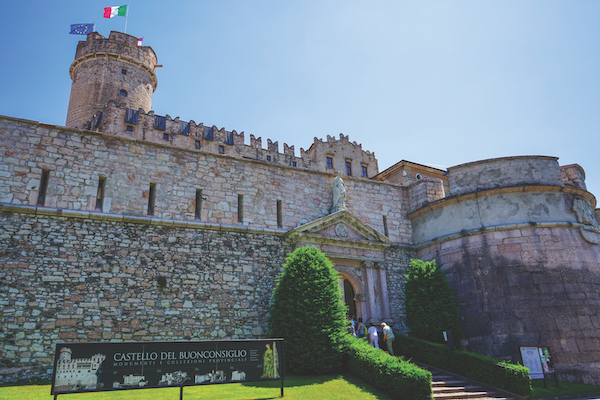
Echoes of ancient Rome
As is true of many places in Italy, traces of the ancient Roman Empire are still visible in Trento today. The place to go is the Spazio Archeologico Sotterraneo (SASS), the Underground Archaeological Space, a fantastic site in Piazza Cesare Battisti covering some 1,700 sqm of Roman ruins that retrace life in Tridentum, as Trento was called by the Romans when they conquered it in the 1st century BC. (The name means “three teeth”, referring to the three hills that surround the town.)
From here, it’s a quick walk to Castello del Buonconsiglio, one of the region’s biggest draws. This magnificent castle surrounded by lush gardens used to be the home of the prince-bishops and consists of a series of buildings from different eras, from medieval times to the Baroque age. There are numerous art and archaeological collections on display, spanning from prehistory up to the 19th century, but one of the most impressive places to visit is the Eagle Tower with its famous Cycle of the Months, a series of frescoes depicting scenes from court life in the Middle Ages. Also not to miss is the Venetian loggia, a beautiful arched terrace with sweeping views over Trento. During the First World War the castle was used as a barracks and hosted the trial of a group of local patriots who fought against Austria for the annexation of Trentino to Italy. One of them was the local hero Cesare Battisti, whose memory is still very much alive in the city and whose mausoluem rises high on Doss Trento, the hill on the right bank of the Adige river.
I spend the rest of the afternoon browsing the shops between via Paolo Oss-Mazzurana and Largo Carducci, stocking up on food souvenirs from Grado 12 wine shop and Gastronomia Mein, before heading back to Piazza Duomo to enjoy a leisurely glass of Trentodoc, the prestigious sparkling wine produced here, followed by a feast of canederli (bread dumplings with a variety of fillings) and rösti (potato pancakes) for dinner.
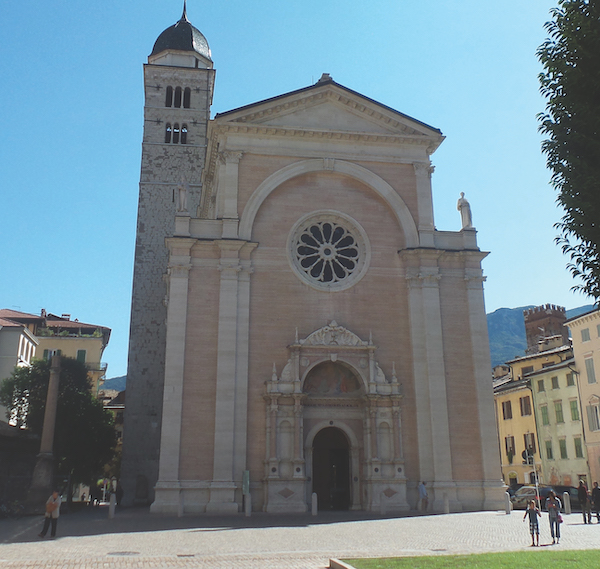
Artistic treasures
Day two of my weekend in Trento takes me on a trip to Trento Alta, but first I pay a visit to the Church of Santa Maria Maggiore, which deserves a stop for its significant historical value (it was one of the key sites of the Council of Trent) and for its artistic treasures.
With a quick five-minute walk I reach the cable car station at San Lorenzo Bridge, where I get a free return ticket thanks to my Trentino guest card. It takes another five minutes to reach the top, where a viewing platform offers uninterrupted views over Trento and the Adige Valley. From there, it’s a ten-minute walk to Sardagna, a sleepy village whose alleys and courtyards hide a series of murals depicting scenes from rural life. Soon you’ll find yourself taking part in a sort of mural scavenger hunt in search of artworks with strange names like El Caliàr (the shoemaker) and I cavai da tiro (the draft horses). But don’t worry, locals will probably approach you to share some hints on how to find them.
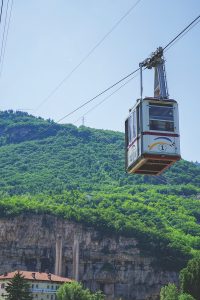
There are a number of walks and trails further up the mountains, but I’m short of time and not equipped for such activity, so I take the cable car back in town to continue exploring Trento’s attractions. My next stop is MUSE, the new science museum designed by Italian archistar Renzo Piano, which is located slightly outside of the historical centre, in the modern Le Albere district. The building is truly impressive, as its shape resembles that of a mountain, with huge glass walls that flood the space with light. Each of its six floors is dedicated to a specific topic, from dinosaurs to Alpine nature and biodiversity, with a series of interesting activities and labs. The museum is crowned with a panoramic terrace and features a lovely garden where you can relax with a coffee or a snack on warm days, while admiring the splendid Palazzo delle Albere next door. This 16th-century noble mansion was used during the Council of Trent to organize events and tournaments, and today it hosts temporary art and photography exhibitions. On the first and second floors you can still see traces of ancient frescoes.
This marks the end of my short break in Trento. Two days is just enough to scratch the surface and get a taste of the city. I’ll be back for more – not least because I know there will always be another glass of chilled Trentodoc waiting for me!
For the best places to visit, eat and stay, check out Valentina’s Trento travel guide
